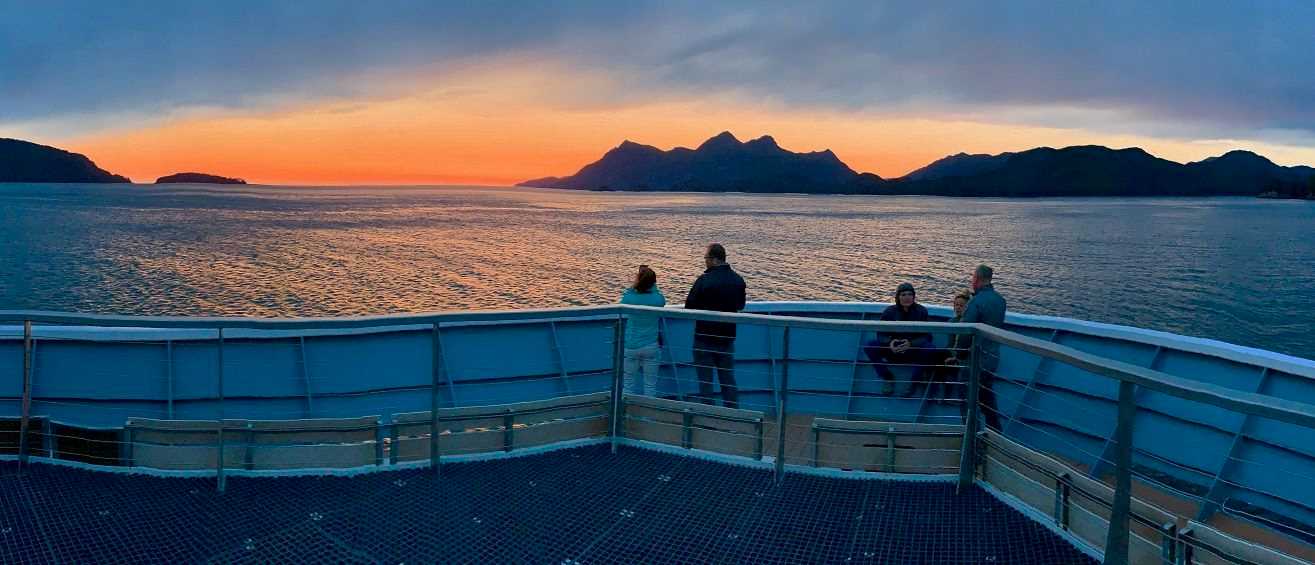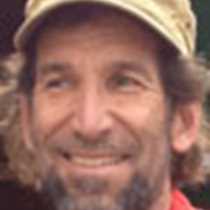Clearing skies and the wash of sunset from the west painted our departure from Sitka on Saturday evening. The hustle and bustle of our inception aboard National Geographic Quest settled as we headed into the narrow island passes of Southeast Alaska, where we finally turned in for the night. The changing weather brought on surprisingly strong winds and brilliant blue skies as we woke up transiting Sergius Narrows into Peril Strait. The land and seascape unfolded under bright sunshine, and many enjoyed the morning downwind run towards Chatham Strait on the outside decks.
For the afternoon we found a safe anchorage in Sitkoh Bay and prepared for hiking and boat tours here on the southeast corner of Chichagof Island. Much of the human and natural history of Southeast Alaska is told in this area, with an extensive intertidal zone, a towering spruce-hemlock forest, and salmon runs in the streams. The native Tlingit people learned how to use the sea, forest, and streams when they first arrived here thousands of years ago. After a disastrous encounter with Russian fur traders, Sitka Tlingit moved here in the early 1800s. But western influence continued to build, and a century later a cannery was established upon the area’s salmon population. Logging built up to peak in massive clearcuts in the late 1900s. Now the cannery has been bought by private owners as summer residences, and extensive stream restoration after the logging has enhanced the return of salmon to the streams. The forest is a patchwork of different aged stands, though giant Sitka Spruce and Western Hemlock can still be found high on the hills and along the shore.
We could see the result of this history in our boat tours and energetic hikes along an old logging road towards the tidal meadow at the head of the bay. Banana slugs chose to cruise the road and understory vegetation at their own pace. Though we didn’t see any animals larger than a mink, bear presence has left many signs along our path. Salmon and crabs swam along the shallow waters on the edge of the bay. After a well-deserved cocktail hour and dinner, we wrapped up the evening with a lively presentation and discussion led by Ted Johnson, professor emeritus, St Olaf College.







